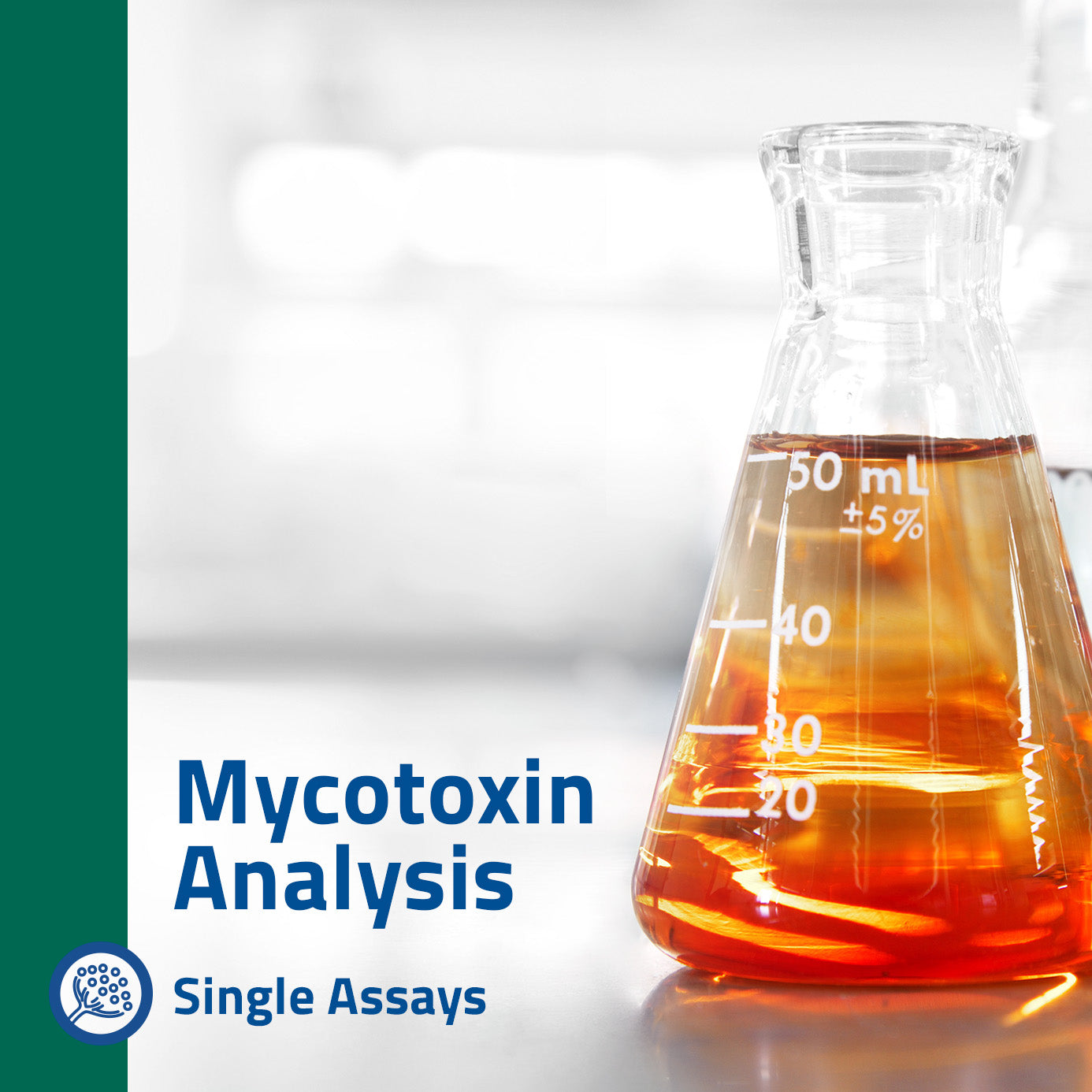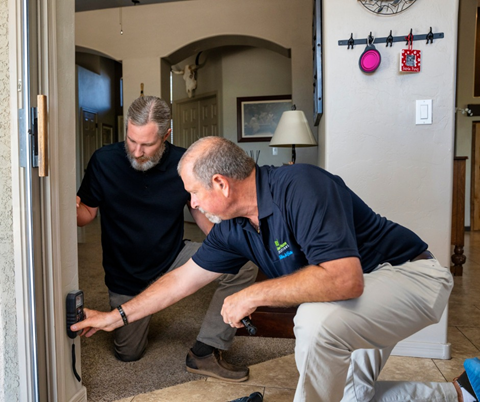Choosing the Right Mycotoxin testing Services for Your Organization
Choosing the Right Mycotoxin testing Services for Your Organization
Blog Article
Exactly How Mycotoxin Testing Helps Protect Against Contamination and Safeguard Food Supplies

Mycotoxin testing is an important method in the food sector, offering as a frontline protection against contamination by unsafe toxic substances created by molds. Via the application of innovative methods like High-Performance Fluid Chromatography (HPLC) and Liquid Chromatography-Mass Spectrometry (LC-MS), food manufacturers can accurately measure and detect mycotoxin levels in agricultural items.
Comprehending Mycotoxins
Understanding mycotoxins begins with recognizing that they are toxic secondary metabolites produced by certain molds, which can contaminate farming items. These metabolites are not essential for the development or recreation of the fungis however can have serious implications for human and animal health. Mycotoxins are commonly found in staple plants such as corn, wheat, barley, and nuts, where they can multiply under certain conditions of wetness and temperature level.
There are several kinds of mycotoxins, each created by various fungal varieties. Aflatoxins, generated by Aspergillus varieties, are amongst the most well-known, understood for their cancer causing homes. Another considerable group includes ochratoxins, produced by Aspergillus and Penicillium types, which have nephrotoxic impacts. Fusarium varieties create trichothecenes and fumonisins, both of which are related to various intense and persistent wellness issues.

Risks of Mycotoxin Contamination
The risks of mycotoxin contamination are diverse, presenting substantial dangers to both food security and public health and wellness. Mycotoxins, toxic compounds produced by particular types of fungi, can infect a large range of farming products including cereals, nuts, seasonings, dried fruits, and coffee. When these contaminants penetrate the food supply, they can cause severe health and wellness problems such as liver damage, kidney failure, and even cancer. At risk populaces, consisting of youngsters, the elderly, and immunocompromised people, are particularly in jeopardy.
Financial impacts are another significant worry. Polluted plants can cause considerable monetary losses for farmers and food producers because of minimized returns and the demand for costly purification measures. Additionally, global trade can be considerably prevented as nations implement strict mycotoxin laws to protect their populaces, resulting in denied shipments and stretched profession relations.
Ecological factors such as climate adjustment exacerbate the danger of mycotoxin contamination. Variations in temperature level and humidity can create desirable conditions for fungal growth, boosting the chance of contamination occasions. Thus, understanding and alleviating these risks are important for making sure the safety and stability of worldwide food materials.
Techniques of Mycotoxin Checking
Properly determining mycotoxin contamination in farming items is important for protecting public wellness and preserving food safety and security requirements. Numerous methods are utilized to spot and measure mycotoxins, each offering particular advantages and limitations.
High-Performance Liquid Chromatography (HPLC) is an extensively utilized approach due to its high sensitivity and accuracy. It involves separating mycotoxins from other substances in an example, enabling exact metrology. In A Similar Way, Fluid Chromatography-Mass Spectrometry (LC-MS) integrates fluid chromatography with mass spectrometry to offer in-depth molecular information, making it specifically valuable for identifying several mycotoxins all at once - Mycotoxin testing Services.

Gas Chromatography-Mass Spectrometry (GC-MS) and Thin-Layer Chromatography (TLC) are also employed, each with one-of-a-kind applications. GC-MS works for unpredictable mycotoxins, while TLC provides an easier, cost-effective option for preliminary screening.
Benefits of Routine Evaluating
Routine screening for mycotoxins in agricultural products supplies various benefits, significantly adding to public content health and food safety and security. By recognizing contamination early, routine testing assists protect against the circulation of toxic foods, therefore minimizing the danger of mycotoxin-related ailments amongst consumers. This positive technique not just safeguards human wellness but also improves the overall quality of food supplies.
Consistent testing additionally supports regulatory conformity. Various nations and regions have established rigorous limits for mycotoxin degrees in food and feed. Sticking to these restrictions with routine screening makes certain that distributors and manufacturers fulfill legal standards, thus preventing charges and trade barriers. Preserving conformity promotes customer depend on and brand track record, which are essential for market success.
Furthermore, normal mycotoxin screening can bring about substantial economic advantages. Early discovery of contamination permits prompt treatment, minimizing prospective losses from extensive contamination. Carrying out regular screening methods can also minimize recall prices and associated liabilities, which can be monetarily ravaging.
Furthermore, regular testing offers useful information that can notify far better agricultural methods and storage conditions. By comprehending patterns of contamination, producers can take on safety nets, thereby adding and decreasing future risks to the sustainability of the food supply chain.
Applying Examining Methods
Executing reliable mycotoxin testing procedures try here is essential for making sure the safety and security and top quality of agricultural products. Developing a durable testing framework includes multiple key steps, beginning with the identification of prospective contamination points within the manufacturing and supply chain. This consists of pre-harvest, post-harvest, storage space, and circulation phases. Each phase should be inspected to pinpoint where mycotoxin contamination is most likely to happen.
Once important control points are determined, selecting proper screening approaches is crucial. Typical techniques consist of enzyme-linked immunosorbent assay (ELISA), high-performance fluid chromatography (HPLC), and mass spectrometry (MS) Each method has its staminas and weaknesses; hence, picking the appropriate one depends on the details mycotoxin being checked, the needed sensitivity, and available sources.

Finally, incorporating the testing protocols into an extensive food safety and security management system is a good idea. This improves try this out traceability and makes it possible for swift corrective activities when contamination is spotted, therefore safeguarding the stability of the food supply chain.
Verdict
Mycotoxin screening is vital in preventing contamination and safeguarding food products by allowing very early discovery of hazardous toxins produced by molds in farming products. Regular screening enhances brand name credibility, monetary security, and depend on in food security by lessening contamination-related losses and preserving high standards in food manufacturing.
Mycotoxin screening is an important method in the food market, offering as a frontline defense versus contamination by hazardous toxins produced by mold and mildews. An integrated strategy including farming techniques, storage administration, and normal screening can reduce the risks associated with mycotoxin contamination, guaranteeing food security and public wellness.
The threats of mycotoxin contamination are multifaceted, posturing significant dangers to both food safety and security and public wellness.Normal testing for mycotoxins in farming items uses numerous advantages, dramatically adding to public health and wellness and food security.Mycotoxin testing is essential in protecting against contamination and securing food materials by allowing early detection of damaging contaminants produced by molds in agricultural products.
Report this page